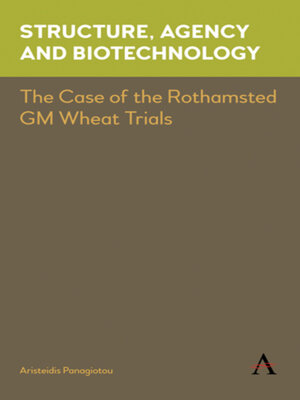Structure, Agency and Biotechnology
ebook ∣ The Case of the Rothamsted GM Wheat Trials · Key Issues In Modern Sociology
By Aristeidis Panagiotou

Sign up to save your library
With an OverDrive account, you can save your favorite libraries for at-a-glance information about availability. Find out more about OverDrive accounts.
Find this title in Libby, the library reading app by OverDrive.



Search for a digital library with this title
Title found at these libraries:
| Library Name | Distance |
|---|---|
| Loading... |
Structure, Agency and Biotechnology argues for the significance of sociological theory and highlights the insights it can offer to the study of agricultural biotechnology. Cautioning against a simplistic reading of the GM controversy as merely a debate of science versus politics, Aristeidis Panagiotou suggests that the discussion should be embedded in the wider social, political, economic and cultural contexts. Structure, Agency and Biotechnology assesses the 2012 Rothamsted GM wheat trials and proposes that the tension underlying GM technology should be resolved through sustained dialogue, public involvement and broad scientific consensus.
|The overarching aim of "Structure, Agency, Biotechnology: The Case of the Rothamsted GM Wheat Trials" is to propose a way of filling the analytical gap found in the current literature by offering an original theoretical framework. This framework is able to assess both the content and context of the scientific field without resorting either to deterministic or to what theorists refer to as "conflationist strategies." In order to demonstrate the heuristic value of the framework, the 2012 GM wheat field trials carried out by Rothamsted Research, often associated with the "second push" of agribiotech firms to bring Genetically Modified Organisms (GMOs) to the UK, areassessed, and key aspects of the experiment areunderscored. At the same time, the broader institutional arrangements, key ideological constructs and the social order are examined, and a reframing of the controversy which moves beyond the simplistic conceptualization of it being a case of science versus politics is suggested. The volume also proposes a clear set of guidelines, which stem from the methodological and theoretical deep structure of the suggested framework but do not demand prior theoretical knowledge, which can be used by a wider audience engaged with biotechnology. This audience can draw on the guidelines either for reasons of developing a critical understanding of particular situations or for initiating the process of sustained dialogue between involved parties. These two dimensions are of great significance for practical policy orientations.







